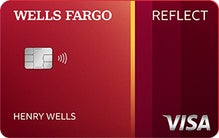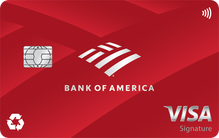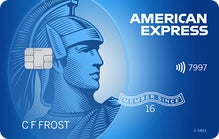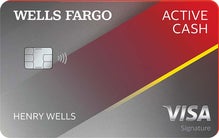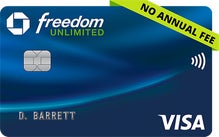Best low-interest credit cards for May 2025
Advertiser Disclosure: Bankrate’s editorial team chooses and recommends the credit cards on this page. While we may receive compensation when users apply for cards through this page, our recommendations and card ratings are produced independently without influence by advertising partnerships with issuers.
Filter by
Showing 10 results
Purchase intro APR
0% intro APR for 21 months from account opening
Regular APR
17.24%, 23.74%, or 28.99% Variable APR
Intro offer
N/A
Rewards rate
N/A
What you should know
Card Details
Best for rotating-category cash back
Purchase intro APR
0% for 15 months
Regular APR
18.24% - 27.24% Variable APR
Intro offer
Cashback Match
Rewards rate
1% - 5%
Why you'll like this: It offers solid short- and long-term value with its combo of an intro APR, first-year Cashback Match and rotating categories.
Reward Details
What you should know
Card Details
Best for home improvement
Cardholder rating
Purchase intro APR
0% Intro APR for 15 billing cycles for purchases
Regular APR
18.24% - 28.24% Variable APR on purchases and balance transfers
Intro offer
$200
Rewards rate
1% - 3%
Why you'll like this: It lets you choose which categories earn rewards year-round, unlike other rotating category cards.
Reward Details
What you should know
Card Details
Best for families
on American Express's secure site
See Rates & Fees, Terms ApplyPurchase intro APR
0% on purchases for 15 months
APR
20.24%-29.24% Variable
Intro offer
Earn $200
Rewards rate
1% - 3%
Why you'll like this: It offers a great balance of rewards value and intro APR offers.
Reward Details
What you should know
Card Details
Best for dining and grocery rewards
Purchase intro APR
0% intro on purchases for 15 months
Regular APR
19.24% - 29.24% (Variable)
Intro offer
Earn $200 Cash Back
Rewards rate
1% - 8%
Why you'll like this: It holds great long-term value as one of the only cards that earns rewards at such a high rate at both grocery stores and restaurants.
Reward Details
What you should know
Card Details
Purchase intro APR
0% intro APR for 12 months from account opening
Regular APR
19.24%, 24.24%, or 29.24% Variable APR
Intro offer
$200 cash rewards
Rewards rate
2%
Why you'll like this: This card has great long-term value through its ability to earn constant rewards, the intro balance transfer offer and great cellphone protection.
Reward Details
What you should know
Card Details
Best for 1.5% cash back
Cardholder rating
Purchase intro APR
0% intro on purchases for 15 months
Regular APR
19.24% - 29.24% (Variable)
Intro offer
Earn $200
Rewards rate
1.5% - 5%
Why you'll like this: Its flat rewards rate and low cost make it a great foundation for a Capital One rewards stack.
Reward Details
What you should know
Card Details
Purchase intro APR
0% for 12 months on Purchases
Regular APR
17.24% - 27.99% (Variable)
Intro offer
N/A
Rewards rate
N/A
Why you'll like this: It has one of the longest intro APRs for balance transfers, making it a great pick for debt-reducers.
What you should know
Card Details
Best for domestic travel
Purchase intro APR
0% Intro APR on Purchases for 15 months
Regular APR
18.99% - 28.49% Variable
Intro offer
Earn $200 cash back
Rewards rate
1.5% - 5%
Why you'll like this: Its mix of bonus categories makes it easy to earn travel rewards even if you don’t spend heavily on travel.
Reward Details
What you should know
Card Details
Intro offer
N/A
Rewards Rate
N/A
Annual fee
$0
Regular APR
17.99% Variable APR
Why you'll like this: Its relatively low ongoing APR and simplicity make it easy to focus on paying off your balance.
What you should know
Remove a card to add another to compare
Remove a card to add another to compare
Compare Bankrate’s top low-interest credit cards
| Card Name | Variable APR | Best for | Bankrate review score |
|---|---|---|---|
|
Regular APR: 17.24%, 23.74%, or 28.99% Variable APR
|
Long intro APR offers |
4.3 / 5 Our writers, editors and industry experts score credit cards based on a variety of factors including card features, bonus offers and independent research. Credit card issuers have no say or influence on how we rate cards.
Apply now
on Wells Fargo's secure site
|
|
|
Regular APR: 18.24% - 27.24% Variable APR
|
Rotating-category cash back |
4.4 / 5 Our writers, editors and industry experts score credit cards based on a variety of factors including card features, bonus offers and independent research. Credit card issuers have no say or influence on how we rate cards.
Apply now
on Discover's secure site
|
|
|
Regular APR: 18.24% - 28.24% Variable APR on purchases and balance transfers
|
Best for home improvement |
4.1 / 5 Our writers, editors and industry experts score credit cards based on a variety of factors including card features, bonus offers and independent research. Credit card issuers have no say or influence on how we rate cards.
Apply now
on Bank of America's secure site
|
|
|
Regular APR: 18.24% - 28.24% Variable APR on purchases and balance transfers
|
Bank of America Customers |
|
|
|
Regular APR: 20.24%-29.24% Variable
|
Families |
4.6 / 5 Our writers, editors and industry experts score credit cards based on a variety of factors including card features, bonus offers and independent research. Credit card issuers have no say or influence on how we rate cards.
Apply now
on American Express's secure site
See Rates & Fees
, Terms Apply
|
|
|
Regular APR: 19.24% - 29.24% (Variable)
|
Dining and grocery rewards |
4.8 / 5 Our writers, editors and industry experts score credit cards based on a variety of factors including card features, bonus offers and independent research. Credit card issuers have no say or influence on how we rate cards.
Apply now
on Capital One's secure site
|
|
|
Regular APR: 19.24%, 24.24%, or 29.24% Variable APR
|
Large purchases |
4.3 / 5 Our writers, editors and industry experts score credit cards based on a variety of factors including card features, bonus offers and independent research. Credit card issuers have no say or influence on how we rate cards.
Apply now
on Wells Fargo's secure site
|
|
|
Regular APR: 19.24% - 29.24% (Variable)
|
1.5% cash back |
3.8 / 5 Our writers, editors and industry experts score credit cards based on a variety of factors including card features, bonus offers and independent research. Credit card issuers have no say or influence on how we rate cards.
Apply now
on Capital One's secure site
|
|
|
Regular APR: 17.24% - 27.99% (Variable)
|
Balance transfers |
4.1 / 5 Our writers, editors and industry experts score credit cards based on a variety of factors including card features, bonus offers and independent research. Credit card issuers have no say or influence on how we rate cards.
Apply now
on Citi's secure site
|
|
|
Regular APR: 18.99% - 28.49% Variable
|
Domestic travel |
4.6 / 5 Our writers, editors and industry experts score credit cards based on a variety of factors including card features, bonus offers and independent research. Credit card issuers have no say or influence on how we rate cards.
Apply now
on Chase's secure site
|
|
|
Regular APR: 17.99% Variable APR
|
Credit union customers |
|
Researching the best low-interest credit cards
We thoroughly rate and research the best low-interest credit cards based on key criteria to help you make confident decisions when choosing your next credit card. Learn more about our methodology below.
What to know about low-interest credit cards
A low-interest credit card is defined by its annual percentage rate (APR), which can be variable or fixed. If the low end of the variable percentage is around 18 percent, we generally qualify it as a low-interest card.
Our 2024 Credit Card Debt Report claims that more than half of American adults have credit card balances, and 60 percent have carried a balance for more than a year. If you find yourself strapped with debt like most Americans, it’s worth considering how a low-interest credit card can help you manage your debt.
Comparing credit card interest charges
The best way to analyze your options is to use your actual spending or balances. You might be surprised by how much low-interest credit cards can save you compared to cards with high APRs.
Here are two of the best low-interest cards compared with a rewards card using average credit card debt from Experian's most recent report:
| Credit card | Credit card ongoing APR* | Daily periodic rate | Balance | Interest for a 30-day billing cycle |
| Chase Sapphire Preferred® Card | 19.99% - 28.24% Variable | 0.058% | $6,730 | $111.46 |
| Capital One Savor Cash Rewards Credit Card (See Rates & Fees) | 19.24% - 29.24% (Variable) | 0.054% | $6,730 | $107.24 |
| Wells Fargo Reflect® Card | 17.24%, 23.74%, or 28.99% Variable APR | 0.049% | $6,730 | $96.02 |
*Using each card’s lowest possible Variable APR.
Bankrate Insight
If you're dead set on finding a way to lower your credit card interest rate, contact your issuer. You can call and ask to lower your interest rate or even negotiate a new payment plan entirely. If you've generally been on time with your payments and are a loyal customer, use those points to make your case. With the right approach, you could be successful in lowering your rate.
What makes a great low-interest card
A great low-interest card will include several features that make it easy to manage current card debt or debt accrued from new purchases. Ideally, it will help you manage debt over the long-term, but these cards should not be used to wrangle several years' worth of debt without a solid payoff plan. Here’s what to consider when choosing a low-interest credit card:
The best low-interest card will have an intro APR on purchases and balance transfers, and pair them with a low ongoing APR. Cards like the Citi Diamond Preferred Card and the Wells Fargo Reflect Card are exceptional choices that balance short- and long-term savings.
The best low-interest cards will also let you access perks and benefits at no additional cost. Cards like the Chase Freedom Unlimited® have great long-term value with rewards, food delivery credits and travel protections.
The average credit card interest rate in the U.S. hovers around 20 percent. Your goal with a low-interest card is to pay less interest than you would without it — so find a card with an ongoing rate less than 20 percent.
Low-interest cards news & views
We assessed our proprietary data of users who were approved for credit cards on our site to find trends for approvals. Recent approvals for low-interest credit cards have remained fairly steady, with fluctuations in approval rates hovering between a high of nearly 70 percent in November 2024 and a low of about 45 percent in December 2024.
Despite those odds in late 2024, approval rates continue on a downward trend after a short spike in January 2025. The most recent data from February 2025 shows that only 47 percent of applicants received approvals. This could be forecasting the same tightening of standards on credit card products the Federal Reserve reported in January 2025. If our data is an indication, an application sent now stands a better chance of approval than one sent later in the year.
Approval data is by no means conclusive, and not something that can predict your own personal approval odds. It can be a helpful indicator of when issuers are receiving or approving most applications. But it begs the question, which cards are the best for getting a low-interest rate?
The short answer is: none of them. Credit card interest rates are astronomical relative to rates on other financial lending products. However, the best low-interest credit cards typically have interest rates on the low end that fall under the current average credit card APR.
A user on Reddit said it best: There’s no such thing as a low-interest-rate credit card; it’s either 0 percent intro offer or APRs 18 percent and higher. While this is mostly true, it doesn’t tell the whole story. Most credit union cards have an APR well below the national average.
While a credit union card is likely to have the lowest interest rate among most credit cards, lowering credit card interest rates across the board has been a talking point in Washington, D.C. for the last few months. President Trump has spoken about capping credit card interest at 10 percent, an idea that has gained bi-partisan traction, but it’s not likely to progress far through Congress, where similar bills have not been passed.
*The quotes and citations included on this page have been verified by our editorial team and are accurate as of the posting date. Outlinked content may contain views and opinions that do not reflect the views and opinions of Bankrate.
Ask the experts: Is it possible to get a card with a low interest rate if you have bad credit?
Erica Sandberg
Contributor, Credit Cards
There is a strong correlation between the interest rate you are eligible for and your credit score. The higher your credit score is, the better the rate issuers offer you might be. Even if your credit score is poor, however, you won't be charged any interest if you keep the balance to zero. Most cards will give you a 25 to 30 day grace period. It won’t matter how high your interest rate is, issuers won’t charge finance fees as long as you pay your bill in full before or by the due date. The more you do that, your credit score should rise, so if and when you want a new credit card with a low APR, you will be in a better position to qualify.
Frequently asked questions about low-interest credit cards
How we assess the best low-interest credit cards
When evaluating the best balance transfer and low-interest cards, we consider a mix of factors, including how cards score in our proprietary card rating system and whether cards offer features that fit the priorities of a diverse group of cardholders.
This includes users who need to carry a balance long term, need as much time as possible to chip away at debt or are looking for maximum long-term value via rewards.
We analyzed over 100 of the most popular balance transfer and low-interest cards and scored each based on its introductory APR, intro APR period length, ongoing APR, balance transfer fee, perks and more to determine whether it belonged in this month’s roundup.
Here’s a quick look at how our rating methodology breaks down for low-interest cards:
-
Intro APR and offer length for new purchases 40%
-
Ongoing APR 35%
-
Intro APR and offer length for balance transfers 13%
-
Balance transfer, annual and other fees 12%
*The information about the Citi Rewards+® Card has been collected independently by Bankrate.com. The card details have not been reviewed or approved by the card issuer.
